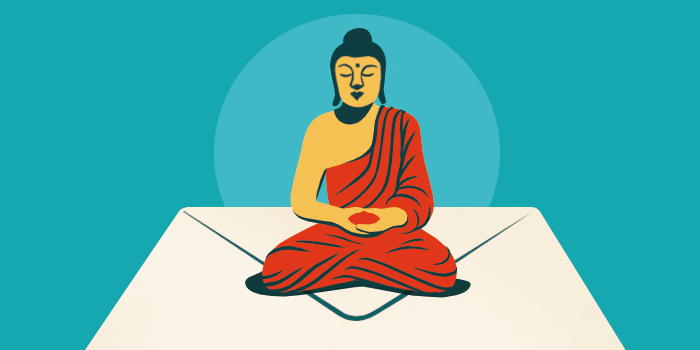Uposatha days
Uposatha (Sanskrit, uposadha) is a general term for days of observance in the lunar calendar. All the major Buddhist holidays such as Vesak are uposatha days. This is similar to Hinduism’s Purnima celebrations, which are also keyed to cycles of the moon. The Buddha, in discussion with a laywoman in the Muluposatha Sutta, referred to uposatha (sometimes translated as “sabbath”) as “the cleansing of the defiled mind through the proper technique.” Today, while all Buddhist traditions observe religious holidays, only the Theravada tradition regularly maintains the tradition of uposatha, gathering weekly or bi-weekly.
Uposatha days are ritual cleansing days observed by nuns, monks, and laypeople. Laypeople undertake additional precepts beyond the usual five, specifically celibacy, fasting, avoiding entertainments, and so on. These prohibitions are identical to those undertaken by initiates joining the sangha, except that monastics are not allowed to handle money.
Phases of the moon dictate uposatha. In Southeast Asian Theravada Buddhism, gatherings are held on the full moon, new moon, and quarter moons, while in Sri Lanka, only the full moon and new moon are observed. These days are particularly active at Theravada monasteries, with many lay people visiting, preparing food for nuns and monks in the morning, listening to chanting and sermons, and helping with the maintenance of the monastery grounds. Lay people often dress in white, make offerings, meditate, perform circumambulations, and often spend hours, if not all day, at the monastery.
For Theravada monastics, uposatha is a time of purification. On the new and full moon uposatha days, nuns and monks gather to recite the Patimokkha (Sanskrit, Pratimoksa), the monastic code of conduct, and confess misdeeds. The Buddha considered this ceremony to be one of the centerpieces of monastic life and one of the practices that defined the sangha. Not attending was excused only in cases of great illness.
While uposatha is commonly observed only in Theravada countries, the practice exists in modified form in some Mahayana traditions. For example, Japan’s roku sainichi, or six days of fasting (per month), follows the same principles, and laypeople temporarily observe monastic rules.

Tricycle is more than a magazine
Gain access to the best in sprititual film, our growing collection of e-books, and monthly talks, plus our 25-year archive
Subscribe now